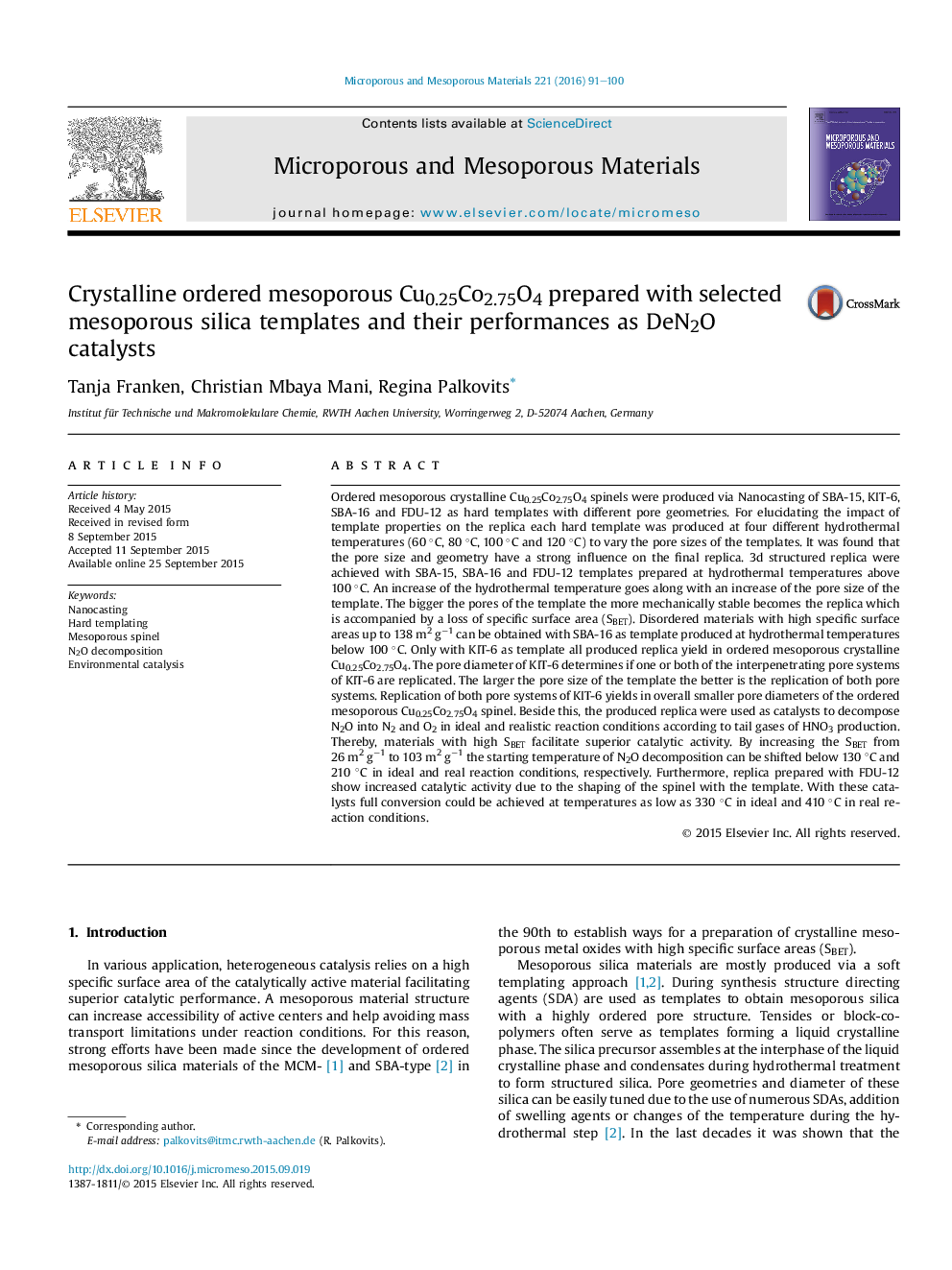| Article ID | Journal | Published Year | Pages | File Type |
|---|---|---|---|---|
| 72317 | Microporous and Mesoporous Materials | 2016 | 10 Pages |
•Ordered mesoporous Cu0.25Co2.75O4 prepared with SBA-15, KIT-6, SBA-16 & FDU-12 templates.•Insights in most suitable template properties for successful replication.•Pore sizes of template have strong influence on stability of crystalline replica.•High increase in DeN2O activity due to surface enhancement.
Ordered mesoporous crystalline Cu0.25Co2.75O4 spinels were produced via Nanocasting of SBA-15, KIT-6, SBA-16 and FDU-12 as hard templates with different pore geometries. For elucidating the impact of template properties on the replica each hard template was produced at four different hydrothermal temperatures (60 °C, 80 °C, 100 °C and 120 °C) to vary the pore sizes of the templates. It was found that the pore size and geometry have a strong influence on the final replica. 3d structured replica were achieved with SBA-15, SBA-16 and FDU-12 templates prepared at hydrothermal temperatures above 100 °C. An increase of the hydrothermal temperature goes along with an increase of the pore size of the template. The bigger the pores of the template the more mechanically stable becomes the replica which is accompanied by a loss of specific surface area (SBET). Disordered materials with high specific surface areas up to 138 m2 g−1 can be obtained with SBA-16 as template produced at hydrothermal temperatures below 100 °C. Only with KIT-6 as template all produced replica yield in ordered mesoporous crystalline Cu0.25Co2.75O4. The pore diameter of KIT-6 determines if one or both of the interpenetrating pore systems of KIT-6 are replicated. The larger the pore size of the template the better is the replication of both pore systems. Replication of both pore systems of KIT-6 yields in overall smaller pore diameters of the ordered mesoporous Cu0.25Co2.75O4 spinel. Beside this, the produced replica were used as catalysts to decompose N2O into N2 and O2 in ideal and realistic reaction conditions according to tail gases of HNO3 production. Thereby, materials with high SBET facilitate superior catalytic activity. By increasing the SBET from 26 m2 g−1 to 103 m2 g−1 the starting temperature of N2O decomposition can be shifted below 130 °C and 210 °C in ideal and real reaction conditions, respectively. Furthermore, replica prepared with FDU-12 show increased catalytic activity due to the shaping of the spinel with the template. With these catalysts full conversion could be achieved at temperatures as low as 330 °C in ideal and 410 °C in real reaction conditions.
Graphical abstractFigure optionsDownload full-size imageDownload as PowerPoint slide
